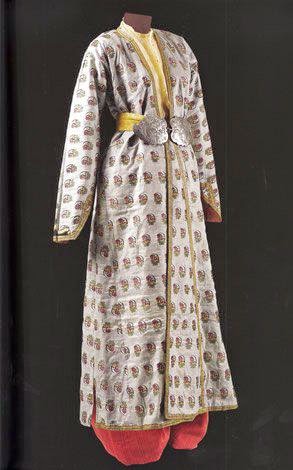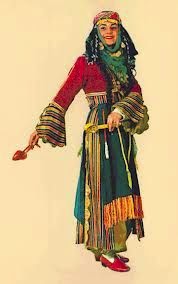The central Asian Turks used to wear leather boots, mintan shirt, a short caftan used with a belt and a kind of riding trousers loose at the top narrowing downwards suitable for horse riding. Caftan and boots also gained significance as a sign of status.
mintan shirt
Bashlyks, head coverings, as in clothes, were made of fur or sheepskin with the purpose of protection from the cold. Bashlyks were also observed to be symbols of status
'Kavuk' : was the most common type of bashlyk. was formed in the XVII. century. Fur was a material of prestige in that period.
Women's clothes of the Ottoman period were observed in the 'mansions' and Palace courts.the XIX. century continued their existence without much change.
In the XVI. century women wore two-layer long 'entari'; and 'tьl', velvet shawl on their heads. Their outdoor clothing consisted of 'ferace' and 'yeldirme'.
The simplification in the XVII. century was apparent in an inner 'entari' worn under short-sleeved, caftan-shaped outfit. The matching accessory was a belt.
Entari
Daily, work and special day clothes are different. Hair styles during a wedding and after the bridal chamber differ. In markets, it is easy to identify which village people live in just from their clothes.
In rural areas, women spend most of their time with working. As a result, their daily, work and special day clothes are different. Special costumes and hair dressings are only to be seen at wedding ceremonies. Women’s hair styles differ in accordance with their social status, and whether they are married or engaged, or not. Hair style is an important feature of women’s lives.
Typical village dress: long-sleeved tops, şalvar(bloomers), and, in two cases out of three,headscarves.



.jpeg)



.jpeg)













No comments:
Post a Comment